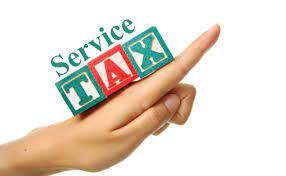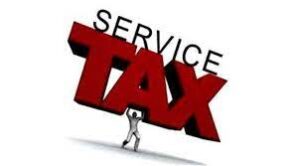Introduction
Taxation is an integral part of any economy, allowing governments to generate revenue for public welfare and infrastructure development. One such tax that businesses and service providers need to be aware of is Service Tax. This article will provide a step-by-step explanation of service, covering its definition, benefits, applications, limitations, and more.
Definition of Service Tax
Service tax is an indirect levied by the government on services provided by businesses. Service providers collect this from customers and remit it to the government instead of consumers paying it directly. The government introduced it in India in 1994 under the Finance Act, and it applied to a wide range of services before being subsumed under the Goods and Services (GST) in 2017.
User Intent: Why Should You Know About Service Tax?
Understanding service is essential for:
- Businesses: To comply with regulations and avoid penalties.
- Consumers: To be aware of what they are paying for.
- Accountants & Tax Consultants: To provide accurate financial guidance.
- Policy Makers: To ensure effective governance.
Benefits of ServiceВ
- Revenue Generation – It was a major source of revenue for governments before GST.
- Encourages Compliance – Businesses had to maintain proper records, ensuring transparency.
- Broad Tax Base – It covered various services, increasing government earnings.
- Equitable Taxation – The burden was distributed among service users.
- Boosted National Development – Funds from service were used for public welfare.
Usage of Service Tax
Service tax applied to multiple industries, including:
- Banking & Financial Services
- Telecommunication Services
- Hospitality & Tourism
- Advertising & Marketing
- Consulting & IT Services
Limitations of Service Tax
Despite its advantages, service had certain drawbacks:
- Complexity – The classification of services often led to confusion.
- High Compliance Cost – Businesses had to bear additional costs for maintaining records.
- Litigation Issues – Disputes often arose over service applicability.
- Cascading Effect – Unlike GST, service did not provide input credit benefits.
- Tax Evasion – Many businesses underreported their services to avoid liability.
Application of Service Tax
- Service was applicable to service providers earning above a threshold limit.
- Businesses had to register for service with the department.
- Tax rates varied but were generally 15% before GST implementation.
- Businesses had to file returns periodically to ensure compliance.
Cooperative Table: Service Tax vs GST
| Feature | Service Tax | GST |
|---|---|---|
| Tax Nature | Indirect Tax on Services | Unified Tax on Goods & Services |
| Applicability | Only on Services | Goods & Services |
| Input Tax Credit | Limited | Available |
| Complexity | Higher | Lower |
| Replaced By | GST (2017) | Ongoing Tax System |
Conclusion
Service tax played a crucial role in India’s taxation system until it was replaced by GST in 2017. Understanding its benefits, applications, and limitations helps individuals and businesses appreciate the transition to GST. While service had complexities, it also ensured government revenue and industry compliance.
10 FAQs on Service Tax
- What was the service rate before GST?
- The service rate was 15% (including cess) before GST implementation.
- Who was liable to pay service?
- Service providers who exceeded the threshold exemption limit.
- When was service tax introduced in India?
- It was introduced in 1994 under the Finance Act.
- Why was service tax abolished?
- It was replaced by GST in 2017 to simplify taxation.
- What were the penalties for non-compliance?
- Heavy penalties and interest on delayed payments.
- Was service tax applicable to freelancers?
- Yes, if they earned above the taxable limit.
- Could businesses claim refunds on service?
- Yes, under certain conditions like export services.
- Was there an exemption limit for small businesses?
- Yes, small businesses earning below в‚№10 lakh (pre-GST) were exempt.
- Did service tax have an input credit?
- Limited, unlike GST which has a broader input credit mechanism.
- How was service different from GST?
- Service applied only to services, while GST covers both goods and services.
By understanding service, businesses and consumers can better appreciate the transition to a simplified GST system. If you have more questions, consult a tax expert or refer to official government sources for clarity.
For further details access our website:https://vibrantfinserv.com/

Web Link:В В В https://vibrantfinserv.com
FB Link:В В В В В В https://fb.me/vibrantfinserv
Insta Link:В В https://www.instagram.com/vibrantfinserv2/
Twitter:В В В В В В https://twitter.com/VibrantFinserv
Linkedin:В В В https://www.linkedin.com/in/vibrant-finserv-62566a259/
Contact:В В В В 8130555124, 8130045124
Whatsapp:В В https://wa.me/918130555124
Mail ID:В В В В В В operations@vibrantfinserv.com
Web Link:В В В https://vibrantfinserv.com
FB Link:В В В В В В https://fb.me/vibrantfinserv
